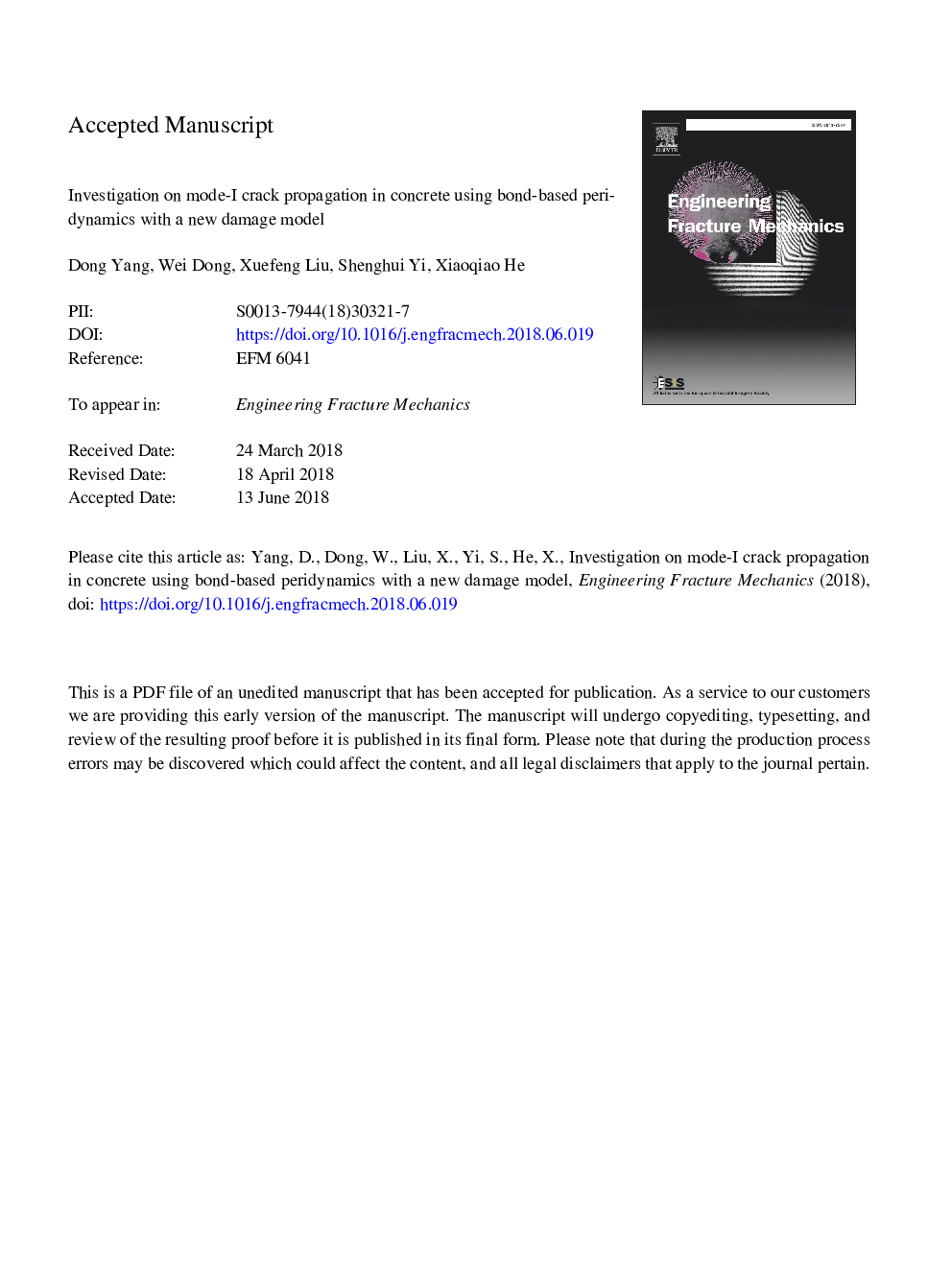| Article ID | Journal | Published Year | Pages | File Type |
|---|---|---|---|---|
| 7168709 | Engineering Fracture Mechanics | 2018 | 36 Pages |
Abstract
A new damage model is proposed in the bond-based peridynamics (BBPD) frame to quantitatively investigate mode-I crack propagation in concrete, which is established based on the pattern of bilinear softening curve commonly used in the discrete cohesive zone model (CZM). This new damage model can be obtained completely based on material properties, that is, once experimental bilinear softening curve, the uniaxial tensile strength, the elastic modulus and fracture energy of concrete are given, this corresponding new damage model will be exclusively determined. And then, the whole fracture processes of concrete specimens with different strengths, dimensions and crack-depth ratios under quasi-static three-point-bending (TPB) are simulated using BBPD to verify this proposed new damage model. The predicted load-crack mouth opening displacement (P-CMOD) curves are in a good agreement with the experimental ones. Finally, in the BBPD frame, a strategy to determine the initial cracking load of TPB beams, the influence of different definitions for computing fracture energy and different damage models on numerical results are discussed respectively. It can be found that different from brittle materials, fracture energy is mainly consumed in the softening stage rather than the elastic stage for concrete. Besides, this new damage model based on bilinear softening curve is more appropriate to describe the damage mechanism of concrete, compared with other damage models in BBPD.
Related Topics
Physical Sciences and Engineering
Engineering
Mechanical Engineering
Authors
Dong Yang, Wei Dong, Xuefeng Liu, Shenghui Yi, Xiaoqiao He,
